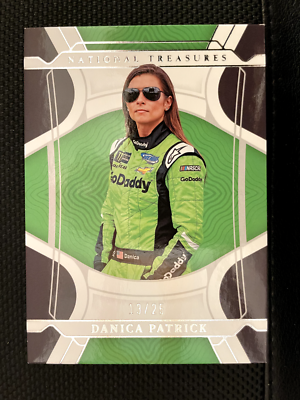Danica Patrick: A Trailblazer in Motorsports

Introduction
Danica Patrick has made an indelible mark on the world of motorsports, breaking barriers as one of the first female drivers to achieve significant success in a male-dominated industry. Her journey has not only inspired countless women in racing but has also brought increased visibility to the sport as a whole. As we explore Patrick’s career, it is crucial to acknowledge her impact on both the racing landscape and the broader cultural context of female empowerment.
Career Highlights
Born on March 25, 1982, in Beloit, Wisconsin, Danica Patrick began her career in karting at the young age of ten. She made her professional debut in the IndyCar Series in 2005, where she quickly became a household name. Patrick’s breakthrough moment came in 2008 when she became the first woman to win an IndyCar race, triumphing at the Japan 300. Her success transcended the track as she became a symbol of determination and resilience.
In 2013, she made history again by becoming the first woman to secure pole position for the Daytona 500, one of NASCAR’s marquee events. Patrick’s participation in the NASCAR series broadened her fan base and showcased her versatility as a driver across various racing formats. Over her career, she competed in multiple Indianapolis 500 races and accumulated significant accolades, including being the first woman to finish in the top five of the race in 2009.
Impact Beyond Racing
Danica Patrick’s influence extends beyond the racetrack. She has been a vocal advocate for women in sports, utilizing her platform to promote inclusivity and support for female athletes. Patrick’s venture into business and entrepreneurship, including her own line of wine and brand collaborations, demonstrates her commitment to evolving beyond racing while remaining a role model for aspiring female drivers.
Moreover, Patrick’s personality and charisma have attracted a vast audience, highlighted by her appearances on various television platforms and as a host for events, including the ESPY Awards. Her presence has helped usher in a new era of motorsports viewership, particularly among young women who see her as a source of inspiration.
Conclusion
Danica Patrick’s legacy in motorsports is undeniable, having shattered glass ceilings and paved the way for future generations of female drivers. As the automotive industry continues to evolve, Patrick’s contributions remind us of the importance of representation and change. Looking ahead, her ongoing projects and advocacy will likely play a crucial role in advancing opportunities for women in not only racing but all aspects of sports. Patrick’s journey serves as an enduring inspiration, urging us all to challenge the status quo and pursue our passions, regardless of the barriers that may exist.









